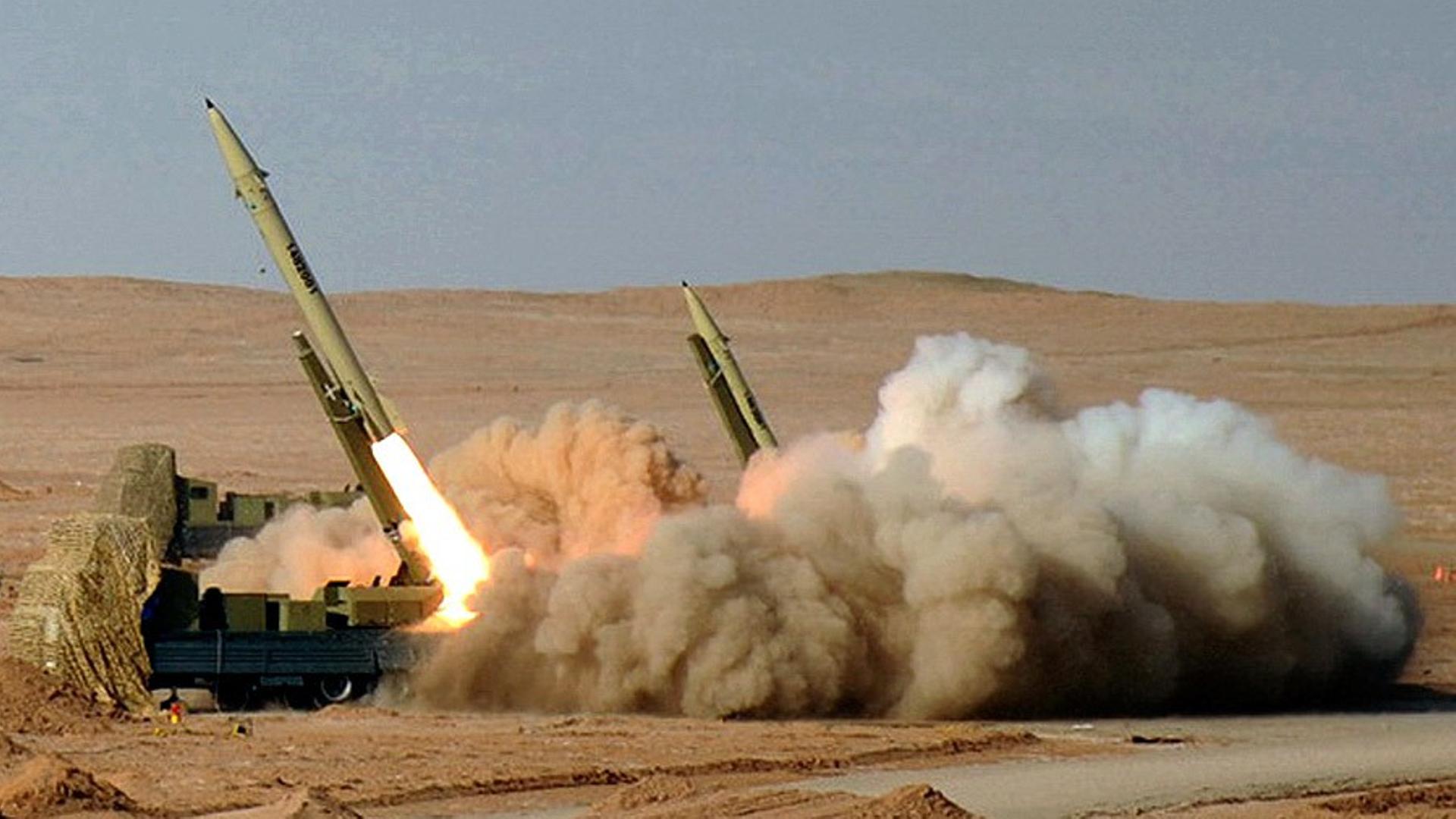Iran has been rehearsing its response to the United States for two years – and this might just be the tip of the iceberg.
The Islamic Republic of Iran launched 22 Fateh ballistic missiles at two Iraqi bases housing American forces. The scale of the damage has not been determined, nor if this will be the last operation Tehran will conduct in retaliation for the assassination of Iranian general Qasem Soleimani last week.
What is for certain is that the manner that Iran chose has been a standard response to attacks on Iranian government personnel for the last two years.
In an article in September 2017, I defined “missile diplomacy” as a means where missiles serve as tools to achieve a political objective in conflicts where war has not been officially declared.
Like drones, ballistic missiles are unmanned weapons. While Trump used Reaper Drones to target Soleimani, Iran used its missiles to retaliate. Both attacks were a proclamation of each state’s political weight, even though Trump’s decision may have been a tactic to distract domestic audiences from the impeachment trial.
The range of Iran’s missiles, on the other hand, demonstrates that the Islamic Republic could reach American forces in Iraq and Syria as well.
Iran’s ballistic counter-terrorism strategy
The Fateh missiles that were used in the most recent strike have a range of 330km. Iran does have missiles that can strike farther.
In retaliation for a June 2018 Daesh attack on Iran’s parliament in Tehran, the Iranian Revolutionary Guard Corps (IRGC) launched six Zolfaghar ballistic missiles, with a range of around 700km, against Daesh targets in Syria’s eastern province of Deir Ezzor. That range puts American forces in Syria, within reach.
A few months later the IRGC launched missiles in early September against the Kurdistan Democratic Party of Iran (KDP-I), based in Iraq. Then in October, it fired six ballistic missiles toward eastern Syria, targeting the Daesh-held town of Hajin, in retaliation for its alleged role in an attack on an Iranian military parade in the city of Iranian Ahvaz in September.
In Syria, Iran had its forces on the ground and proxies there that could have attacked Daesh targets in 2017 and 2018. However, such an attack would have not the impact of a missile launch. The missile attack was officially justified to Iran’s domestic audiences as retaliation for Daesh terrorist attacks against a national facility in 2017 and the military in 2018.
It is the same rationale that is most likely behind the latest attacks against American forces. While Iran has proxies in Iraq that could have attacked the bases, first, missile launches would satisfy domestic audiences seeking revenge for Soleimani’s death, and second, it sends diplomatic signals to Trump about the reach of Iran’s missiles.
Iran’s cruise missile option
Besides ballistic missiles, Iran also has cruise missiles at its disposal, if it chooses to escalate matters further, or in response to further provocation and impulsive decisions by Trump.
A ballistic missile burns up the fuel that propels it into the atmosphere. Once the fuel is consumed, the missile’s trajectory cannot be altered, following a path determined by gravity pulling it towards the Earth’s surface and its eventual target.
A cruise missile, on the other hand, is self-propelled during the duration of its flight and can fly at lower altitudes and change directions to reach its target, thus making it more accurate.
In early February 2019, the Islamic Republic announced the successful test of a new cruise missile with a range of over 1,350 kilometres, adding a new weapon in its already existing fleet of ballistic missiles.
Iran’s cruise missile test then represented a significant technological milestone in its domestic arms production capability, particularly in overcoming the challenges of mastering jet engines for cruise missiles.
The announcement of Iran’s new cruise missile had coincided with a domestic terrorist attack within Iran in the restive Sistan-Balochistan province, which targeted a base of the Basij, the paramilitary force affiliated with the Revolutionary Guards.
While Iran did not retaliate with missiles for that attack, nonetheless, the development of a cruise missile gives the Islamic Republic another option to retaliate against the US in the future.
What happens next?
Trump may choose not to respond to the latest attacks, if American personnel were not hurt, first to not further escalate a conflict going into a campaign year, and second, for fear of the impact of rising oil prices on the American economy.
Iran may not seek even further tragedy in the aftermath of a passenger plane crash outside of Tehran, just hours after the missile launches.
Such an optimistic scenario, however, does not discount the increasing tensions that will ensue.
First, factions within Iraq’s government will continue to push for an American troop withdrawal, leading to deteriorating ties between Baghdad and the Trump administration.
Second, Tehran’s decision to withdraw from the Iran deal will also cause international consternation and bring the region back to the tensions before the 2015 agreement was signed. That being said, Iran seems to have stepped back from its initial statements after the US killing of Soleimani.
Regardless of the outcome over the next couple of days or weeks, Trump’s reckless decision augured in the new decade with even more instability for the Middle East.
Author: Ibrahim Al Marashi
Ibrahim al-Marashi is an associate professor at the Department of History, California State University, San Marcos. He is the co-author of The Modern History of Iraq, 4th edition.
Source










Discussion about this post